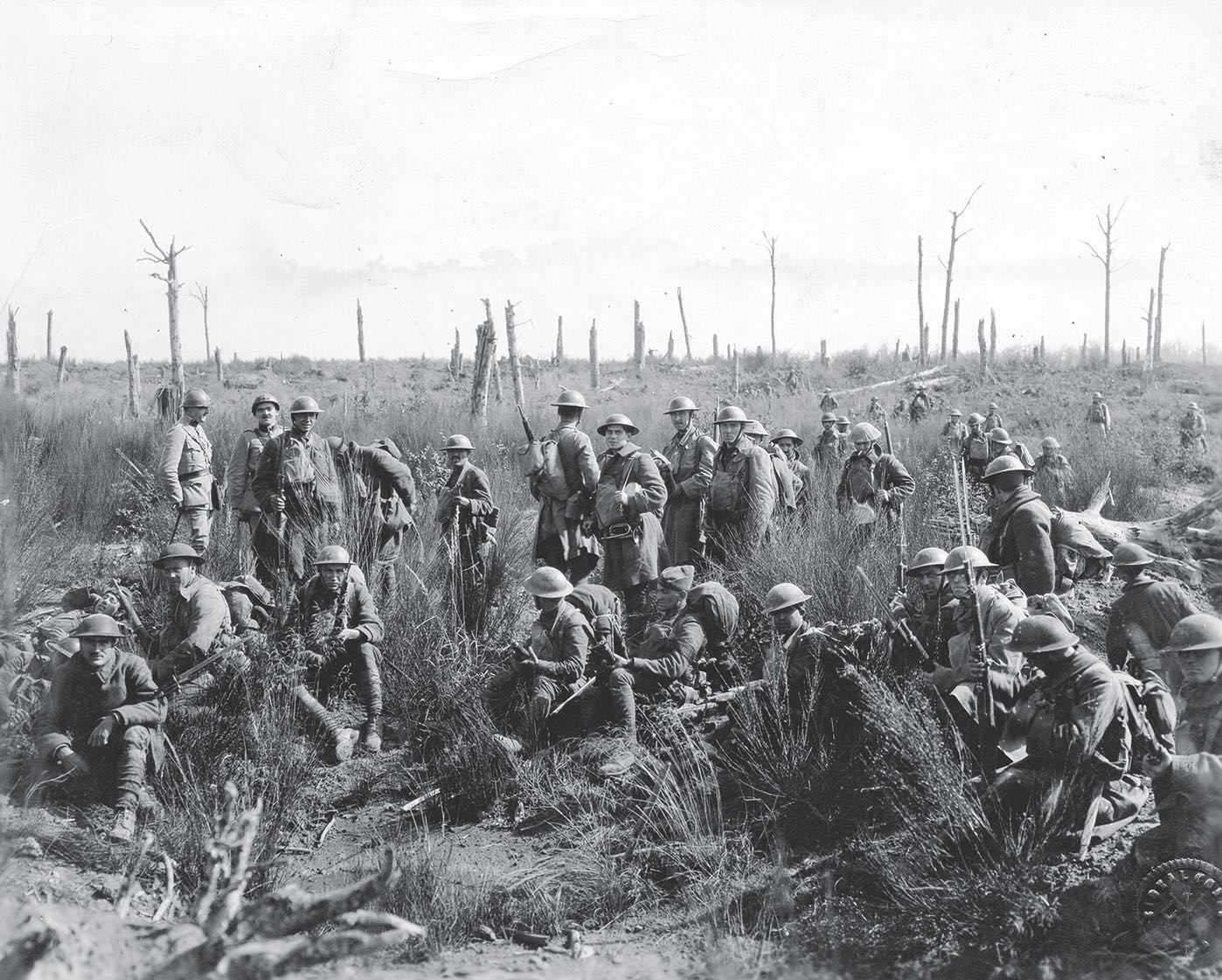The Meuse-Argonne Offensive (Sept. 26–Nov. 11, 1918) was the largest U.S. operation of World War I. It was also the deadliest for the American Expeditionary Forces (AEF), with 26,277 doughboys killed in action and 95,786 wounded in just 47 days of combat. Significant errors in the initial operations plan contributed to that high casualty count.
Following the September 12–15 Franco-American attack at Saint-Mihiel, the U.S. First Army had just 11 days to move more than a half million troops, 900,000 tons of supplies, and nearly 2,800 artillery pieces up to 60 miles into attack positions for the Meuse-Argonne. The AEF had only 900 trucks and few horses. Most of the infantrymen had to walk, leaving them exhausted when they arrived.
The First Army had committed most of its trained and experienced divisions at Saint-Mihiel and could not refit and reposition even a few of them by September 26. As a result, three of the nine first-echelon divisions committed to the initial attack had completed training but had yet to see combat.
On September 20 First Army headquarters issued Field Orders No. 20 for the offensive. No main effort was designated. Each of the three attacking American corps along the 24-mile front had three first-line divisions and one in corps reserve. The First Army general reserve had three divisions. The artillery, too, was evenly strung out. The deployment thus resembled one huge frontal attack.
A main effort emerged by default—the fortified hill at Montfaucon, in the V Corps sector at the center of the American line. That piece of key terrain gave the Germans observation over much of the battlefield. But Montfaucon lay little more than a mile to the west of V Corps’ right boundary with III Corps. Even today the coordination of fire and maneuver across unit boundaries is one of the most difficult and complex of all combat tasks. The way the boundaries were drawn severely limited V Corps’ ability to operate against Montfaucon from both flanks.
Complicating matters, within V Corps’ sector itself Montfaucon straddled the boundary between the 79th Division on the right and the 37th Division in the center. Thus each division could only operate against a single of the objective’s flanks. It was an extremely difficult tactical problem, one neither the 37th nor the 79th was up to. Both were green and only partially trained units.
The operational plan had no basis in reality. The American forces were expected to advance more than 8 miles on the first day, in the process taking Montfaucon, 4 miles from the line of departure. The French commander, Gen. Philippe Pétain, doubted the Americans would even be able to advance beyond Montfaucon before the onset of winter.
Thanks to a tenacious fight put up by the untrained Americans, Montfaucon did fall on the 27th, albeit at a terrible cost. Burned out by the effort, however, the troops stalled. Not until October 14—20 days from the starting gun—did the Americans reach all their first day’s objectives. Another month of brutal fighting lay ahead.
Lessons:
Weight the main effort. The AEF’s V Corps should have had more forces and artillery than either the I Corps or III Corps on its flanks.
Don’t piecemeal the reserves. The divisions of the First Army reserve should have been positioned to support the drive on Montfaucon.
Maintain unity of command. The capture of Montfaucon should have been assigned to one division, with supporting divisions on each flank, and all should have been controlled by one corps headquarters.
Assign critical missions to seasoned troops. The 77th, the first-echelon division with the most combat experience, should have been assigned to take Montfaucon. Instead, it was shunted off to the far left flank of the American attack.
This article appeared in the March 2022 issue of Military History magazine. For more stories, subscribe and visit us on Facebook.





